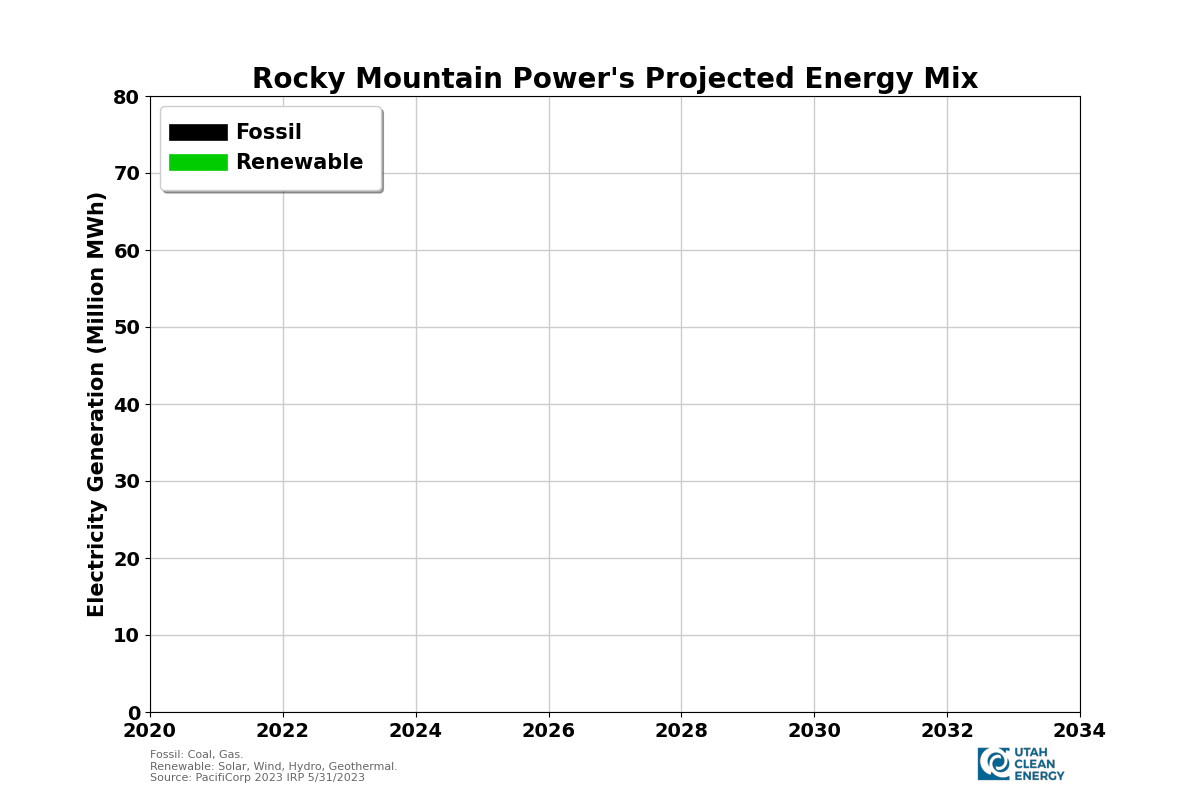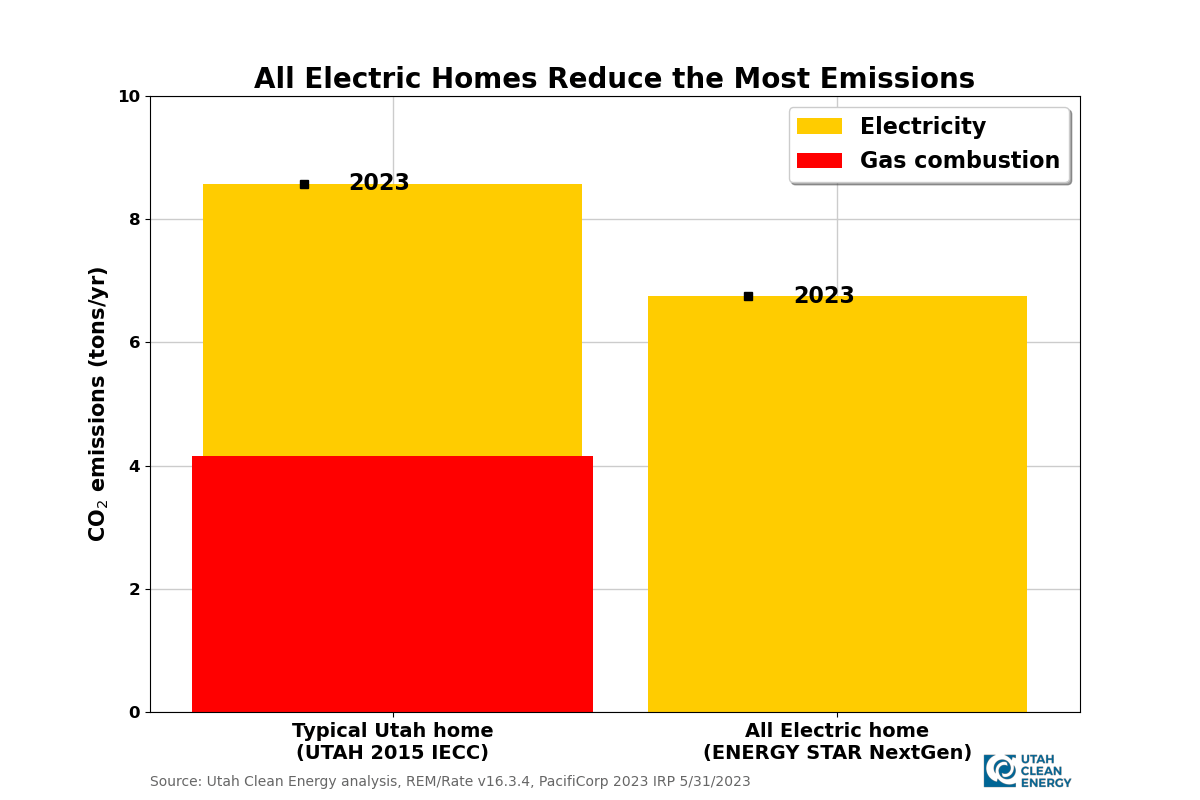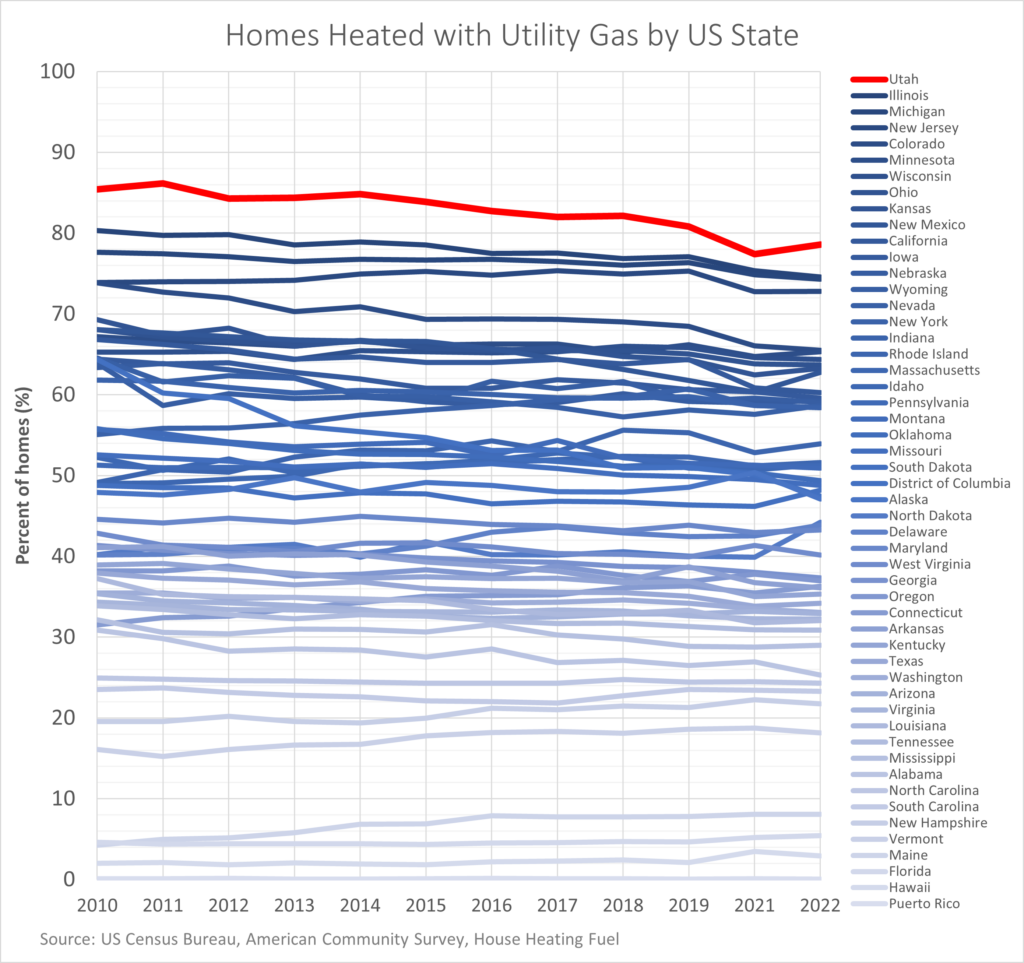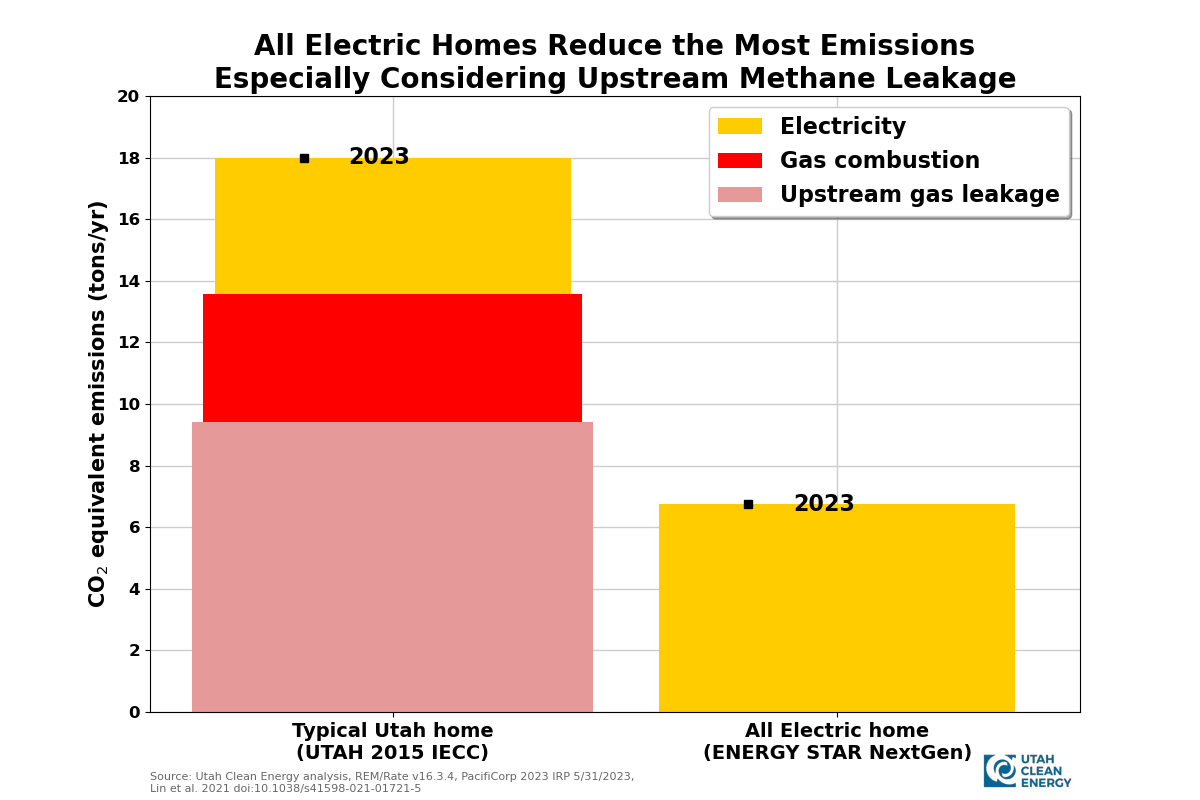There’s a new trend gaining ground to #ElectrifyEverything. Beyond the hashtag, this is a key climate and air quality solution that has massive potential to reduce carbon emissions from our homes. Let’s dive into what it means to #ElectrifyEverythying and how Utah can lead the movement.
Utah is Moving to Renewable Energy
First off, Utah’s electricity system is undergoing a rapid transformation towards clean energy while remaining affordable and reliable. PacifiCorp (Rocky Mountain Power’s parent company) recently announced their plans to build a staggering amount of new clean energy and storage over the next decade. The new solar, wind, and storage we’re building will reduce greenhouse gas emissions from electricity generation by 90% compared to a 2005 baseline and PacifiCorp will be producing more energy from renewable sources than fossil sources by 2025. This plan is a win that Utah Clean Energy has been working towards since our inception, and we are now working to ensure it is implemented.

Electrify Everything to Get to Zero Emissions
A clean electricity system is the backbone of a healthy climate because it means we don’t have to rely on polluting energy to power our lives. The next step is to ensure our homes and buildings can utilize this clean electricity. In 2023 a typical 2,700 square foot home built to current building standards emits about 8.6 tons of CO2 per year. About half of those emissions come from the electricity used while the other half comes from gas combustion for space and water heating. Since emissions from electricity is going down thanks to new renewable energy, in a decade, emissions from that same house will be reduced by 46%, almost half. The remaining emissions are almost all due to gas combustion. We can get to zero emissions if we, you guessed it, #ElectrifyEverything!
Understanding that our electric system is getting cleaner over time illustrates why it’s so important to electrify our existing homes and ensure that new homes being built are all-electric. In fact, if you take that same typical 2,700 square foot home and build it with modern, all-electric and energy efficient standards, you’ll see a dramatic reduction in overall emissions by 88%. Take a look:

Steps to Electrify Your Home
In Utah, about 68% of gas combustion is used for space heating in the winter, which is also a significant contributor to our wintertime air pollution along the Wasatch Front. Therefore, investing in an electric heat pump system should be at the top of anyone’s list when you’re ready to swap out your central air conditioner or furnace since modern heat pumps can provide both heating and cooling. Next, water heaters use about 30% of a typical home’s gas usage, but now there are all-electric drop-in replacements with heat pump hot water heaters. Gas stoves and fireplaces use another 2% of gas in a typical home, but you may still want to consider switching to an induction stove to dramatically improve your own indoor air quality. The good news is that there’s never been a better time to invest in all-electric upgrades because of generous federal and state incentives for home electrification.
In fact, Utah is in a unique situation to take advantage of home electrification incentives. That’s because Utah has the largest share of homes heated with gas combustion of any state in the country. And, since Utah has the largest share of homes heated with gas, that means we also have an outsized opportunity to benefit from the transition to efficient electric technologies. As you can see below, the number of homes in Utah heated with gas has been on a decline for the last decade showing that we’re already making progress towards electrifying homes in Utah. But it will take all of us stepping up to the plate to spread awareness and take advantage of this unprecedented opportunity.
CALL TO ACTION: Spread the word about electrification incentives! Share this post, talk to your neighbors, or share your electrification story to help more people make the switch.

Upstream emissions from gas usage
Upstream methane leakage from gas infrastructure is another serious problem to consider. Utah has some of the highest measured methane leakage rates anywhere in the world, and it shows. If you were to attribute the methane leakage from a typical home’s gas usage (like upstream emissions from electricity), it would nearly double the CO2-equivalent emissions from that home! That’s because methane is an extremely potent greenhouse gas, about 83x more potent than CO2 over a 20-year time horizon. With that fuller understanding of home energy usage and corresponding emissions, it’s clear that accelerating our efforts to electrify our homes and buildings is a winning climate and clean air solution.







